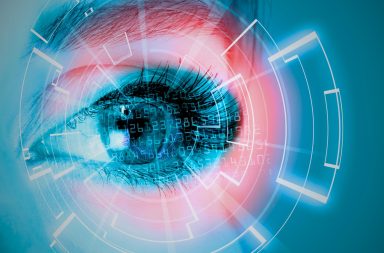Interstitial lung diseases (ILDs) are complex and challenging to manage, particularly when it comes to early detection, accurate prognosis, and effective response to therapy. Despite advances in high-resolution CT (HRCT), which is routinely used in ILD imaging, visual evaluation of the disease can still have high inter-reader variability and low sensitivity to changes in disease severity over short follow-up periods. In this article published in The Lancet Digital Health, authors discuss the clinical and research gaps in ILD diagnosis and prognosis and how machine learning can be applied to imaging biomarker research to close these gaps.
One of the key challenges in ILD management is early detection. Longitudinal studies have shown that incidentally detected subclinical interstitial lung abnormalities (ILAs) on HRCTs are associated with an increased risk of developing idiopathic pulmonary fibrosis (IPF). However, ILAs are also common and occur in up to 9% of lung cancer patients. Not all ILAs represent clinically meaningful diseases, making it challenging to reliably stratify them.
Accurate prognostication using baseline data is also essential in ILD management. Although diagnostic guidelines for several fibrotic lung diseases are available, ILD’s natural history is highly variable among individual patients. Some patients show progressive disease behavior despite conventional therapy, and waiting for patients to show a period of progression presents a major challenge in translating this concept to clinical care.
Effective monitoring of disease response to therapy through HRCT also proves to be a challenge. Visual evaluation of the disease can have high inter-reader variability and low sensitivity to changes in disease severity over short follow-up periods.
Addressing the challenges using machine learning algorithms
To address these challenges, machine learning algorithms can be implemented to identify ILD in at-risk populations, predict the extent of lung fibrosis, and correlate radiological abnormalities with lung function decline. Machine learning can also be used as an endpoint in treatment trials. Advances in image processing and analysis provide further opportunities to use machine learning that incorporates deep-learning-based image analysis and radiomics.
QTC and ML Methods
The authors discuss two methods for analyzing lung medical images: quantitative computed tomography (QCT) and Machine Learning (ML).
QCT uses algorithms to perform lung segmentation, image preprocessing, and image registration to measure variable attenuation corresponding to structural abnormalities.
On the other hand, ML performs feature extraction on digital images to produce numerical descriptors of texture, shape, and other distinctive characteristics that can be computationally analyzed to evaluate potential associations with clinical parameters. Machine Learning can be applied to image features extracted from CTs to evaluate diffuse lung disease and ILD.
The researchers further discuss the use of Deep Learning (DL) in feature-vector-based classification or regression, which can be linked together into composite feature vectors. The two methods are complementary and can provide meaningful prognostic signals, although their use is relatively unexplored and needs further research.
While ML and DL have the potential to identify imaging biomarkers not previously seen by the human eye, they can also lead to difficulties in interpreting abstract features internal to algorithms, which could result in these features and algorithms behaving like black boxes.
Validation is essential to ensure technical performance and clinical significance and minimize bias. Integration and application of ML and DL algorithms to clinical practice should also be studied.
The researchers suggest that ML and DL could play a crucial role in addressing diagnostic, prognostic, and therapeutic clinical research gaps in ILDs. Specifically, it could aid in the stratification of ILAs and established ILD and provide more sensitive tools to identify therapeutic responses in clinical trials.
Conclusions
Machine Learning can be a valuable tool in ILD management. By using ML algorithms to develop more precise and specific digital biomarkers, it can help address ILD diagnosis, prognostication, and therapy response challenges.
However, collaboration and consistency are required to develop optimal algorithms, and candidate radiological biomarkers should be validated against appropriate predictors of disease outcomes. Clinical and imaging data, as well as biological material such as bronchoalveolar lavage, cryobiopsy, or surgical lung biopsy, are essential in evaluating ILD.



